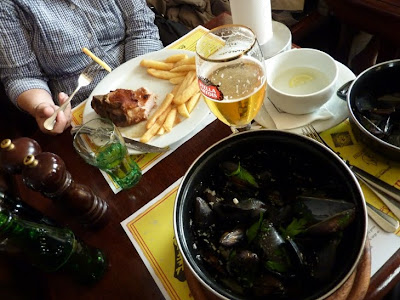 |
West facade and towers; flaming Gothic, as
you can see
|
 |
Interior
|
 |
Beautiful windows (Mucha's the best, we
thought; see earlier post)
|
 |
Stained light on the floor
|
 |
Ceiling; note tracery at top of windows
|
 |
Tomb of St. Vitus; the original church was
built around it in the 10th century
|
 |
A royal tomb
|
 |
Rose window
|
 |
St. Wenceslas chapel
|
 |
East side, buttresses, spires and tower
|








































